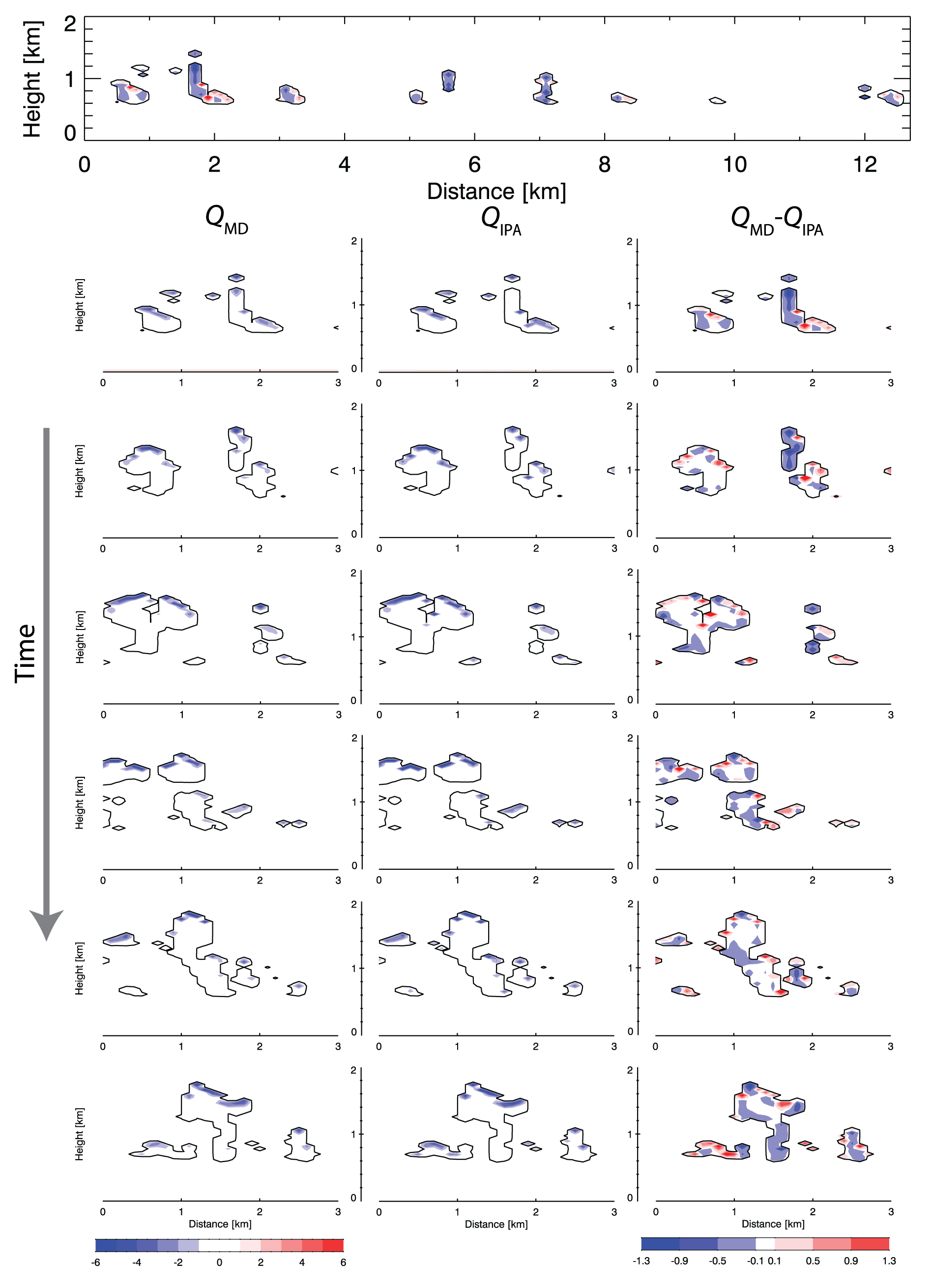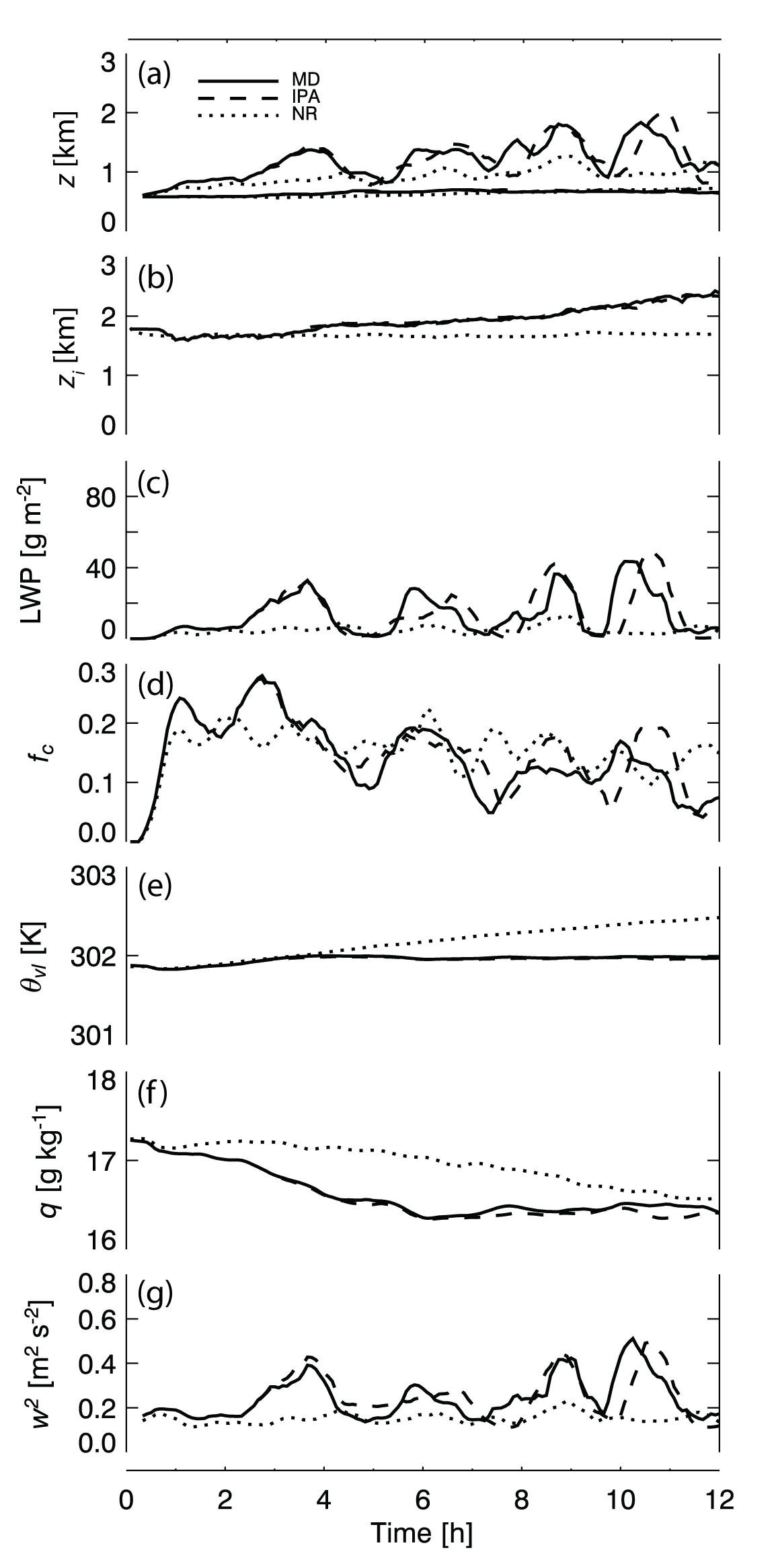Forcing Boundary Layer Cloud Systems with Multi-Dimensional Radiation
Submitter
Mechem, David B. — University of Kansas
Kogan, Yefim — University of Oklahoma - CIMMS
Ovchinnikov, Mikhail — Pacific Northwest National Laboratory
Davis, Anthony B. — Jet Propulsion Laboratory
Evans, Frank — University of Colorado
Ellingson, Robert G. — Florida State University
Area of research
Cloud Distributions/Characterizations
Journal Reference
Mechem, DB, YL Kogan, M Ovtchinnikov, AB Davis, KF Evans, and RG Ellingson. 2008. "Multi-dimensional longwave forcing of boundary la
Science
From large-scale global climate models (GCMs) down to small-scale large eddy simulation (LES), numerical models most commonly employ simple treatments of radiative transfer, where radiation streams upward and downward through the atmosphere. While computationally attractive, this simplification neglects horizontal radiation transport and associated effects such as cloud shadowing and cooling of lateral cloud boundaries. It is well understood that atmospheric radiative transfer is fundamentally multi-dimensional (MD), and that employing one-dimensional (1D) radiative forcing can introduce systematic bias, leading to significant errors in forcing. A long-standing issue is to quantify the effects of MD radiation on the evolution of cloud system properties. Is simple 1D radiative transfer adequate?
Impact
In order to address this question, we have coupled a MD radiative transfer scheme (SHDOM; Evans 1998) to an eddy-resolving model (ERM) (CIMMS LES; Kogan et al. 1995). The model is applied to cases of boundary la
Summary
Instantaneous "snapshot" calculations of longwave MD and 1D radiation for identical cloud fields indicate substantial MD effects, as demonstrated in Figure 1 for a field-of-trade cumulus. MD radiative effects tend to enhance cooling of narrow, isolated cloudy updrafts and reduce cooling of cloud crevices or valleys. The differences, however, are highly localized and have minor impact on the mean radiative forcing. The interactive simulations demonstrate only subtle differences between MD and 1D radiation schemes, as evident in Figure 2, especially for quantities like inversion height which are more time-integrated in nature. We attribute this result to the fact that radiative cooling is a relatively minor contribution to the total energetics for the low cloud fraction cumulus case. For the solid cloud case, employing MD radiation slightly reduces the entrainment rate and boundary la



